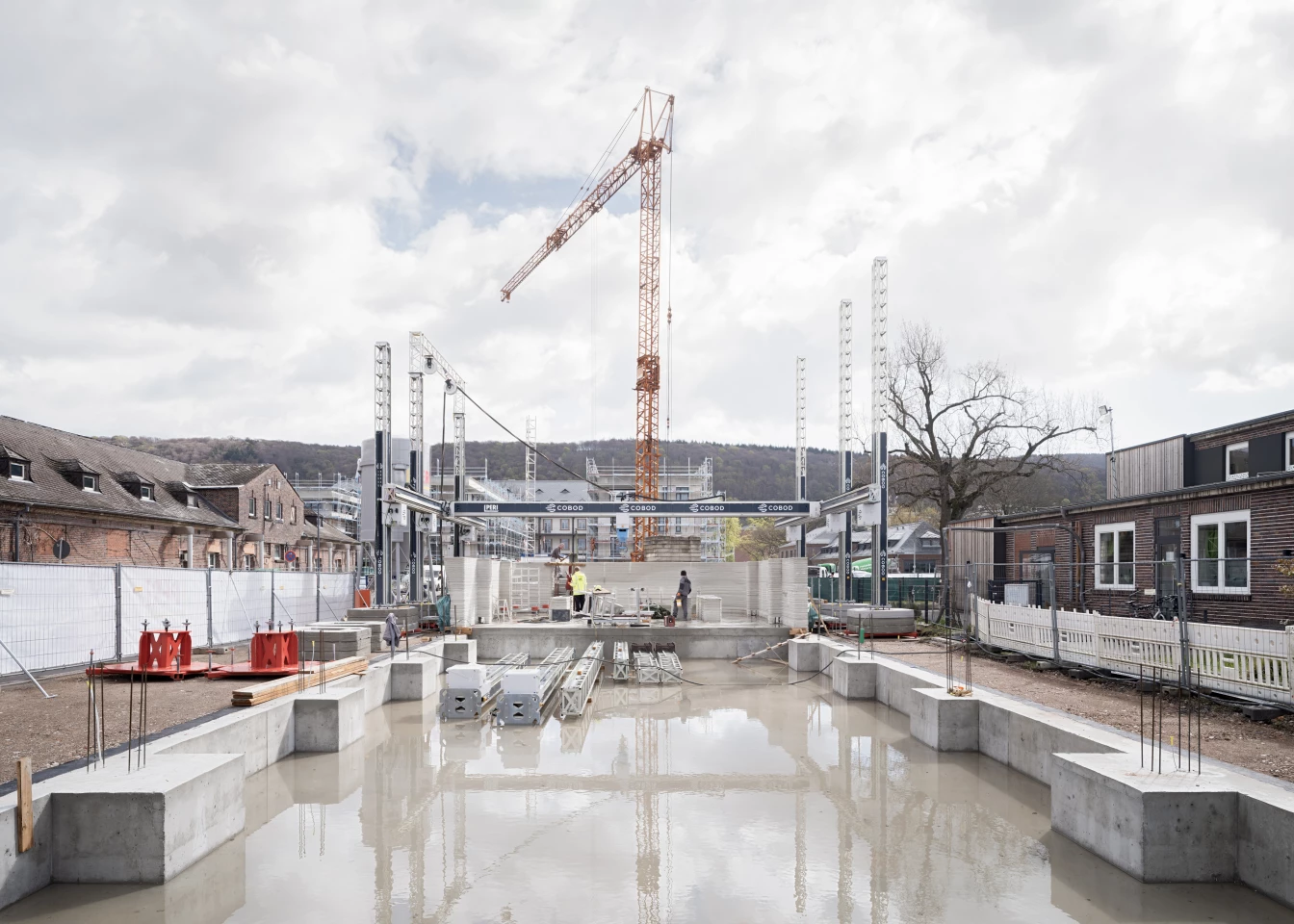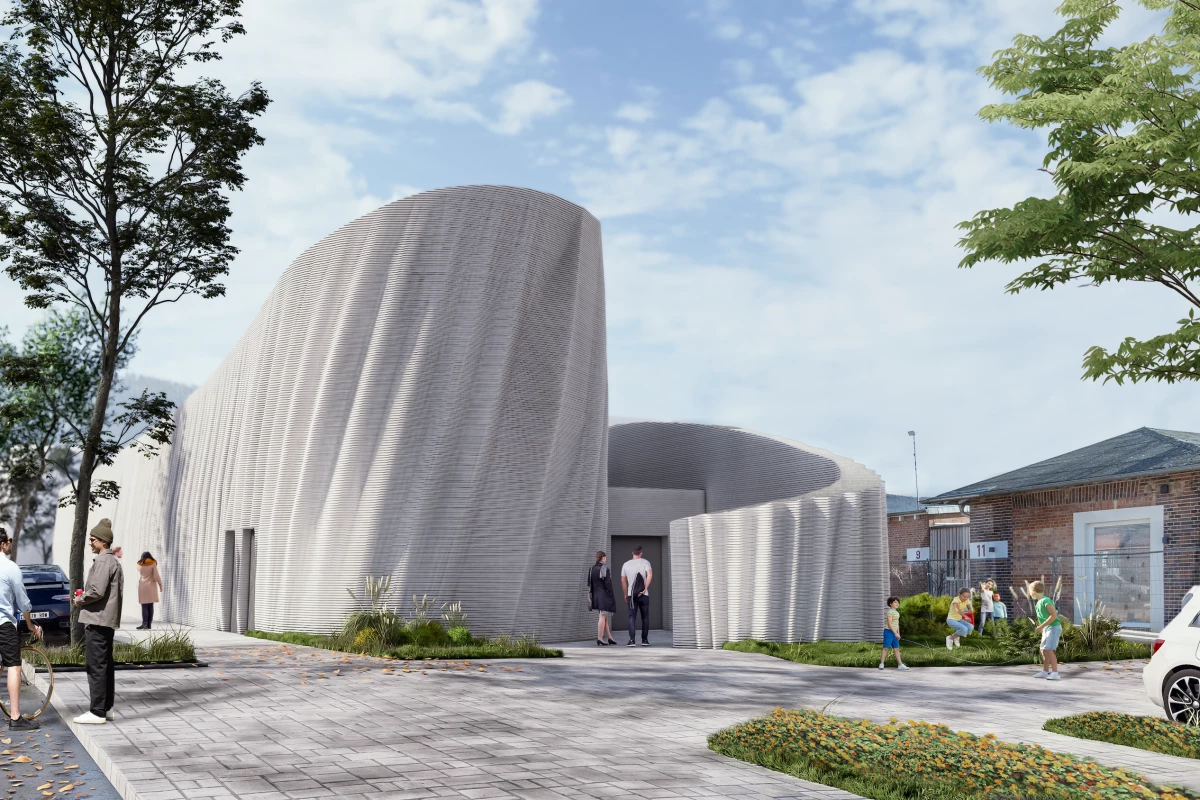3D-printed architeture has gone from strength to strength over the past few years, with the cutting-edge tech used to build everything from an experimental Mars habitat to a string of major residential works in the United States. The latest notable advance comes from Germany, where an ambitious new data center is under construction that's hailed as Europe's largest 3D-printed building.
The project, which doesn't have an official name yet, is located in Heidelberg. Its design leans into the aesthetics of 3D-printed architecture and will feature an eye-catching wavy exterior that will also incorporate some greenery. Its interior will be used to host cloud-computing infrastructure.
It will have a length of 54 m (177 ft), a width of 11 m (36 ft) and a height of 9 m (29.5 ft), which as far as we can tell will indeed make it Europe's current largest 3D-printed structure, though in this fast-moving area it's hard to say how long that will last. It's being built using the same COBOD BOD 2 printer used on 2020's 3D-printed two-story house in Antwerp.
The build process works much like other 3D-printed construction projects we've reported on and involves the printer extruding a cement-like mixture out of a nozzle in layers while following a blueprint, creating the basic shell of the building. The print time is expected to take 140 hours and will require two on-site builders monitoring it and making sure everything goes smoothly.

Once the 3D printer has completed its work, human builders will be tasked with finishing off the work that 3D printers can't yet tackle, including installing a roof, doors, wiring and whatever else is required. According to Kraus Gruppe, the building will be recyclable and its 3D-printed construction will result in approximately 55% of the CO2 production compared to a standard Portland cement building.
"In this unique project Peri is emphasizing two of the key benefits of 3D construction printing; speed of execution and design freedom," said Henrik Lund-Nielsen, Founder and General Manager of COBOD. "Because of this our technology is capable of carrying out everything from materials savings windmill towers over low cost residential housing in Africa to architectural office type buildings in Germany."
The project is expected to be completed sometime in July. It involves Kraus Gruppe, Peri 3D Construction, SSV Architekten, Mense-Korte Ingenieure + Architekten and DAW (Caparol, Alpina), and is being commissioned by Heidelberg IT Management.
Sources: COBOD, Kraus Gruppe [in German]







